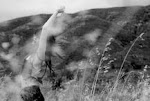






Arelauquen Golf and Country Club.
If you are looking for a mix of relaxation, romance and action for your coming vacation, Arelauquen Golf and Country Club is the place to go, specially if you have kids.
Arelauquen is conveniently located 15 minutes away from Bariloche's airport. The property is surrounded by the Andes mountains and the Nahuel Huapi National Park; it's close to Cerro Catedral, Bariloche's major skiing center and in front of Lago Gutierrez. No matter where you stand, there are magnificent views and the most breathtaking sunsets over Lake Gutierrez.
Arelauquen has an office that takes care of all your requests. You can either choose to rent a villa or stay at the lodge. Someone will always be waiting for you on the date of your arrival regardless of the time (I've tested this many times!). You can arrange to hire housekeeping service so you can go out and enjoy your activities, perhaps a romantic dinner with your soulmate? and have everything taken care of when you get back to the house.
There are so many activities in Arelauquen, we recommend you to plan ahead! If you like horses, you can go horseback riding up in the mountains, get ready for the views! they are something hard to describe or even picture. You can take riding lessons, polo lessons or watch polo matches. You can take gym classes or lift weights, choose the kind of massage or treatment you would like to receive at the spa, relax in any of their gorgeous common spaces, swim, rest and/or have a drink in their indoor-outdoor heated swimming pool, practice kayaking, windsurfing or fly fishing, go sailing, go mountain hiking, play tennis or golf and you can also arrange to send your children to the Kid's Club where a similar array of activities are organized for them by very experienced staff, including camping!
Arelauquen's Club House has a living room section, a quiet library "for adults only" (very important!), a TV Room, besides the spa, fitness area, pool and coffee-bar. There is a recreation area for children and teenagers that has ping pong tables, pool tables, "metegol" games (soccer), wii and wii games, and toys and games for little children and toddlers.
Keep in mind that you will need a car to move around Arelauquen and to explore Bariloche and its surrounding areas, such as Villa la Angostura. The villas offered for rent look good in the photos but are always better than that in reality.
Taking all this information into account, you can enjoy a two week vacation and go back home knowing that you'd love to come back for more Patagonia magic.
We've experienced Arelauquen and we highly recommend it.
Co-post: Vale and Mich
Photos 2 and 4: Vale's kids with their grandfather.




























